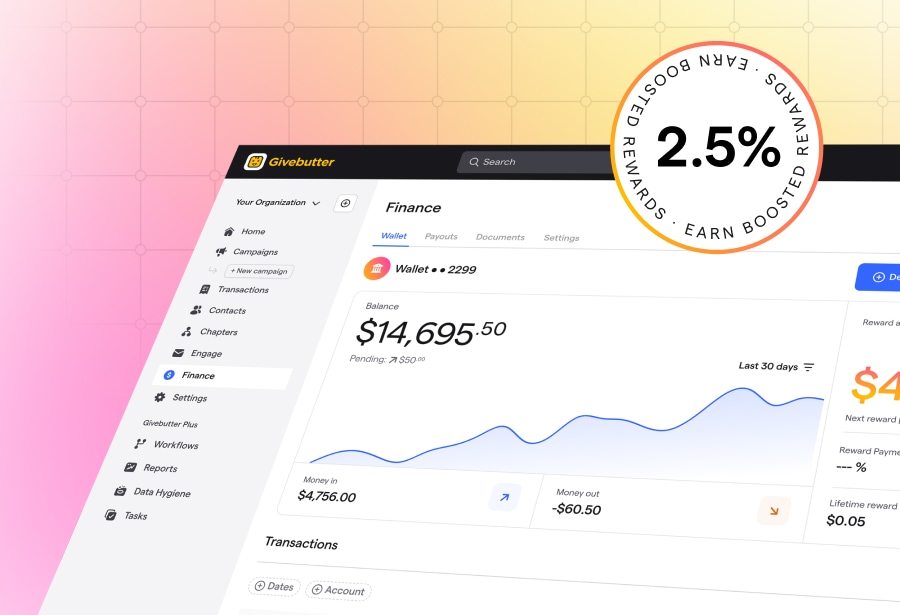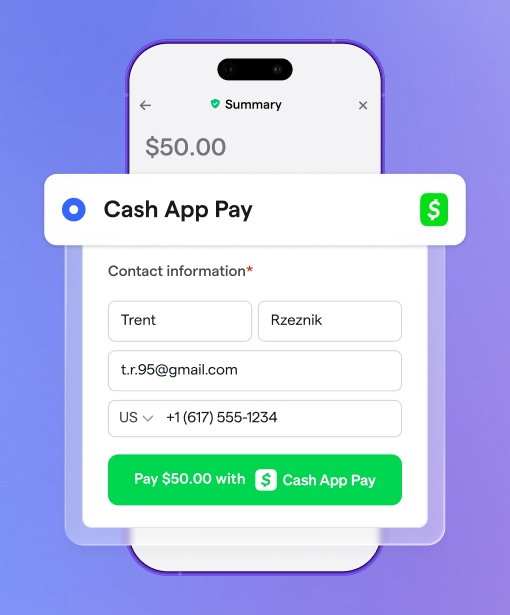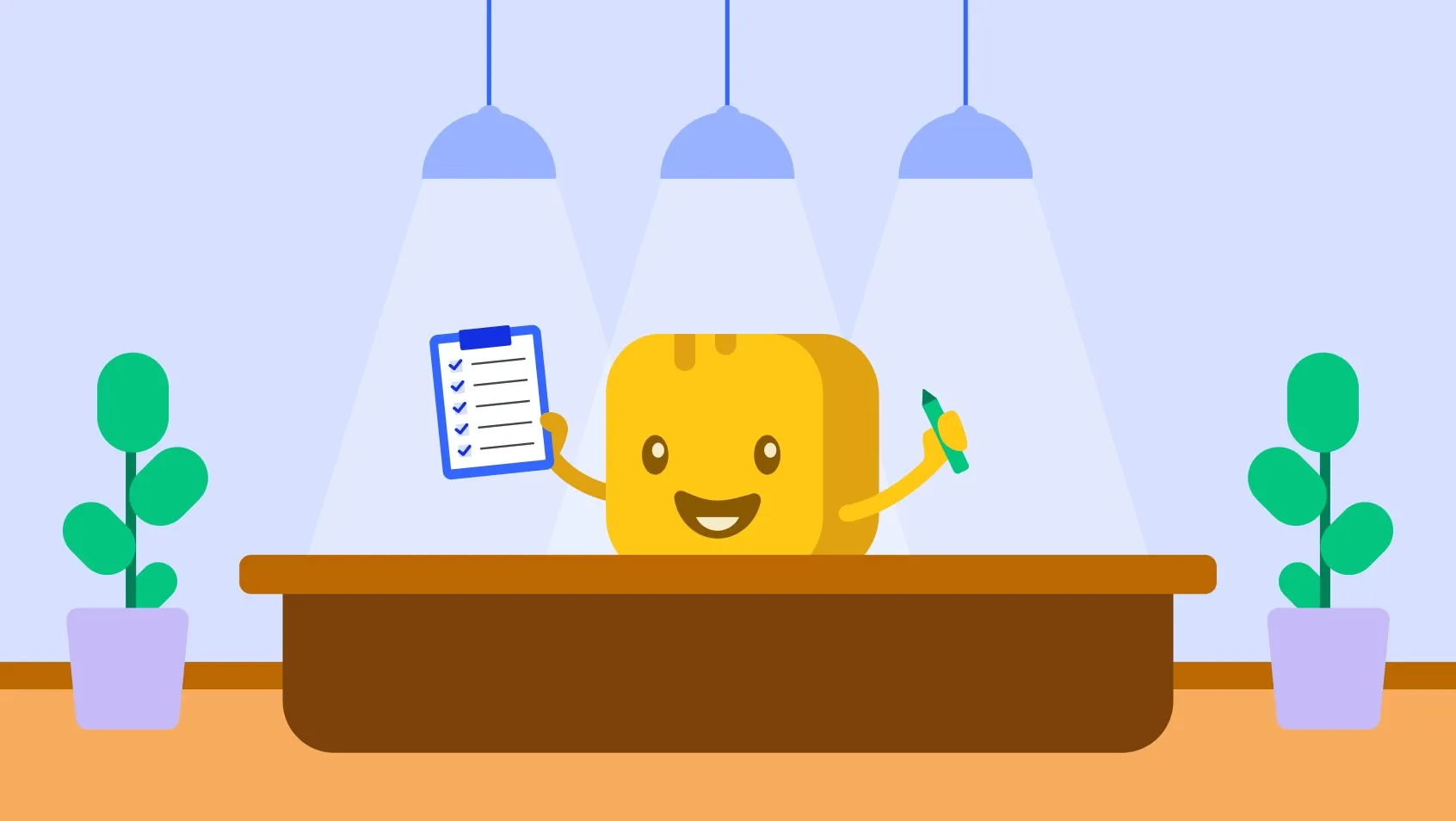Table of contents
Table of contents
There’s no two ways about it: Donor acquisition has long been one of the most challenging aspects of running a nonprofit, and it’s only gotten tougher. Because of this, it’s essential nonprofits concentrate their efforts in the right direction from the start.
The good news is, whether you’re a new nonprofit or an established organization looking to improve your strategy, donor acquisition is a learnable skill. It might feel like magic as you watch your nonprofit grow, but with the techniques and best practices outlined below, donor acquisition can quickly become second nature.
What are donor acquisition strategies?
Donor acquisition means gaining new supporters for your nonprofit, and it’s one of the most challenging aspects of running a nonprofit. As the sector continues to grow, competition for donors has intensified.
To increase their success rate, nonprofit leaders have devised strategies to make donor acquisition as effective and efficient as possible.
Why donor acquisition is crucial for nonprofit growth
For new nonprofits, donor acquisition is the essential first step in building and managing a strong supporter base. For established nonprofits, bringing in new donors ensures consistent, sustained growth.
Continued donor acquisition also helps nonprofits fund daily operations and fills any gaps left by lapsed donors. If your nonprofit has a specific goal or program to fund, expanding your donor base is especially important.
As the nonprofit sector becomes more competitive, a data-driven approach can help you stay in the running and reach future donors.
How to calculate donor acquisition cost
Donor acquisition cost (DAC) is a key metric that helps determine whether your donor acquisition strategy is effective or if you need to change course. The formula is simple—just take a look at the graphic below:
So, if you spend a total of $3K on marketing (such as a website update) and you acquire 110 new donors, your DAC is around $27. Tracking this metric helps you make informed choices about how to invest your funds and maximize your return on investment.
Data is important, but there are still some intangibles. Remember that website update? It will continue to benefit your nonprofit well beyond those 110 donors you acquired, helping to attract supporters for years to come.
How to get new donors for nonprofits
Acquiring new donors takes time, effort, and determination. In fact, 28% of nonprofits say their #1 challenge is getting and retaining new donors.
But it’s absolutely achievable! Building your approach on a foundation of data and thorough research will steer you toward success. Follow these proven donor acquisition strategies to increase your donor acquisition rate.
Identify your target donors 🔎
First, determine who you want to convert to donors. Ideally, your target donors will have three positive indicators:
- Philanthropic indicators: They have previously donated to your nonprofit or another.
- Capacity indicators: They have the financial means to give—such as being a homeowner or having a business affiliation.
- Affinity indicators: They have shown interest in your cause, like attending events or engaging with your organization.
Research your audience ✍️
Once you’ve identified your target donors, learn about their habits and interests. Use data from existing donors, and don’t underestimate the power of a simple conversation.
How much is your audience donating? Where do they live? What do they care about? What are their concerns? Consider sending out a survey or hosting an online social. Once you’ve gathered your research, create a specific donor profile and share it with your team.
A donor profile paints a clear picture of your ideal donor. It’s often an amalgamation of supporters who have given before. For example, if you’re a nonprofit focused on literacy, your donor profile may be a 40-year-old liberal arts professor who has engaged with one of your Facebook posts.
Tools like Givebutter’s donor segmentation software can help you build donor profiles and optimize your outreach strategy.
Now that you have your donor profile, tailor all communications to this specific person.
Leverage multiple communications channels 🗣️
Depending on your target donor, you may prioritize certain channels over others.
For example, email marketing can build relationships with potential donors who have already engaged with your cause and encourage first-time gifts. It’s also helpful for converting one-time donors to recurring givers.
Direct mail can be an effective way to connect with older donors or homeowners. If you’re targeting a younger demographic, consider focusing more effort on Instagram or TikTok marketing.
Share your story 📖
Chances are, you already have a great story—you just need to tell it effectively. Take time to craft a compelling narrative about your nonprofit to get potential donors on board with your cause.
Remember, you’re working to attract new donors who may not be overly familiar with your work. What would you want someone to know if they were visiting your website for the first time or had just signed up for your newsletter?
Get specific when sharing your story. Often, the most impactful narratives focus on one particular person or group helped by your nonprofit. Don’t get carried away sharing your wins or personal narrative—donors want to see how their contributions are helping others.
Tap into corporate connections 👩💼🧑
Corporate sponsorships can open doors to new audiences and valuable resources. If you’re hosting a specific event or giving day, consider partnering with a company to match donations. According to Double the Donation, 53% of donors open emails about matching gifts—more than twice the average open rate!
Get help from your community 🫶
Your existing donors can play a key role in acquiring new supporters. Peer-to-peer fundraising helps expand your reach and introduces your organization to new networks.
Equip your donor community with the information and resources they need to become true advocates for your cause.
How to overcome common donor acquisition challenges
Donor support is essential for nonprofits, but finding new donors can be time-consuming and costly. In recent years, this process has become even more challenging. According to the AFP, 2023 saw a 12% decline in small gift donors.
Weighing the costs and challenges of bringing new donors on board is crucial. This helps you determine whether it’s the right time to focus on donor acquisition or if your efforts would be better directed elsewhere in the donor lifecycle, such as improving donor communications or converting one-time givers into recurring donors.
Challenges of donor acquisition
❌ High expense: The Nonprofit Learning Lab reports that acquiring a new donor costs $1.50 for every $1 raised, compared to $0.20 for every $1 raised for donor retention. The long-term benefits of donor acquisition are real, but upfront costs are steep.
❌ Donor fatigue: Donors may disengage if they receive multiple appeals without seeing the positive outcomes. Clearly measuring and communicating impact is essential for building trust and sustaining donor interest.
❌ Competing nonprofits: As the nonprofit sector grows, so does competition for donor support. To stand out, craft a concise, compelling message that communicates your unique mission and values. A strong narrative increases your ability to foster authentic connections with prospective donors.
❌ Limited resources: Time and money are finite resources. Prioritize specific marketing techniques based on your donor research to streamline your efforts.
Resources for donor acquisition
✅ Use the right platform: Select a platform that streamlines your workflow by housing essential fundraising tools in one place.
✅ Stay budget-conscious: Some platforms cost more than others. Compare fundraising solutions to find the best fit for your needs.
✅Learn your platform: Take advantage of training materials, such as the Givebutter Academy, to master your platform’s features.
✅ Improve your SEO strategy: SEO tools can boost your website's visibility and search engine rankings. Even a basic understanding of SEO works wonders for your online presence.
✅ Do your research: Research tools provide insights into supporters’ wealth and philanthropic interests. For example, Givebutter’s wealth screening tool helps identify potential donors.
Donor acquisition best practices
Since donor acquisition requires both time and money, focus your efforts where they’ll have the greatest impact. These best practices will put you on the right path to sustainable growth.
- Set goals 🎯 Align your donor strategy with your nonprofit goals. If you need to raise a specific amount for a program, let your supporters know—add a fundraising thermometer to your donation page to help donors visualize progress.
- Prioritize major donors 💰 Major donors require a different approach than one-time donors. Build relationships by getting to know them personally and scheduling one-on-one meetings.
- Leverage your board 👩💼 Equip board members with resources to advocate for your nonprofit organization. Their networks can be valuable to expanding your reach.
- Make it personal ✨ Launch personalized campaigns tailored to resonate with different donor groups.
- Simplify giving 👍 Provide a seamless donation experience by offering multiple payment methods and keeping your donation page easy to navigate.
- Plan for the future ➡️ Focus on building long-term relationships with donors, not just securing one-time gifts.
- Offer more engagement opportunities 👥Some people can give time instead of money. Hosting events and volunteer opportunities strengthens relationships and increases the likelihood of future donations.
- Host your own giving day 🎁 Take inspiration from Giving Tuesday by creating a dedicated giving day. Concentrating your marketing efforts into one day can create urgency and be an effective approach to increase donor acquisition.
Get more donors with Givebutter
Donor acquisition is more than just securing gifts; it’s about building genuine, long-term connections with supporters who are passionate about your mission. It’s an ongoing process that requires strategy, creativity, and patience. Though it may take some time, don’t underestimate the power of an adaptable, data-driven approach.
Ready to grow your donor base and enhance your donor relationships? Discover the donor management software you’ll love to use with Givebutter.

Try Givebutter’s donor management software today
Sign up for a free Givebutter account today to start growing your donor base!
.svg)






%20(1).png)



















